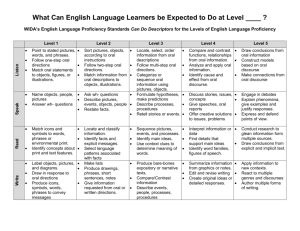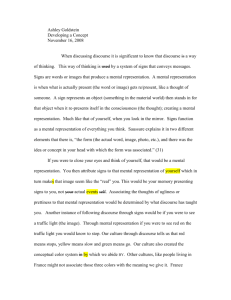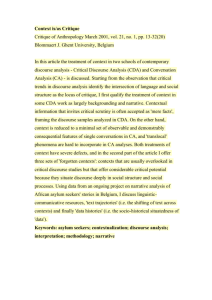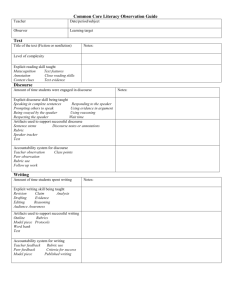WIDA Can Do Teacher Chart
advertisement
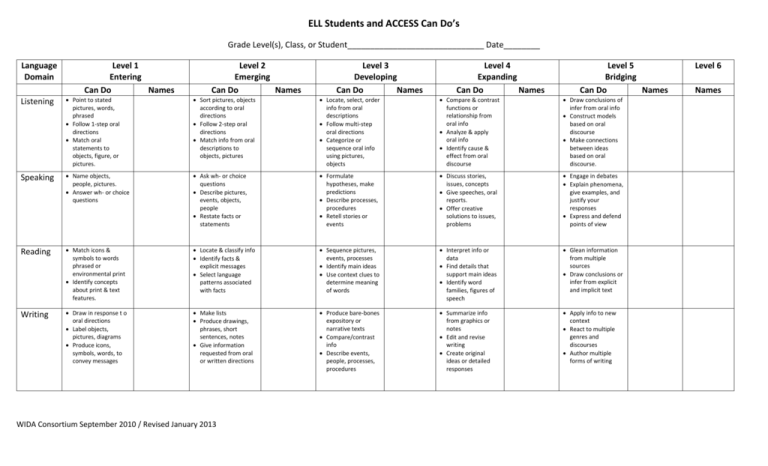
ELL Students and ACCESS Can Do’s Grade Level(s), Class, or Student______________________________ Date________ Language Domain Level 1 Entering Can Do Names Level 2 Emerging Can Do Names Level 3 Developing Can Do Names Level 4 Expanding Can Do Names Level 5 Bridging Can Do Names Listening Point to stated pictures, words, phrased Follow 1-step oral directions Match oral statements to objects, figure, or pictures. Sort pictures, objects according to oral directions Follow 2-step oral directions Match info from oral descriptions to objects, pictures Locate, select, order info from oral descriptions Follow multi-step oral directions Categorize or sequence oral info using pictures, objects Compare & contrast functions or relationship from oral info Analyze & apply oral info Identify cause & effect from oral discourse Draw conclusions of infer from oral info Construct models based on oral discourse Make connections between ideas based on oral discourse. Speaking Name objects, people, pictures. Answer wh- or choice questions Ask wh- or choice questions Describe pictures, events, objects, people Restate facts or statements Formulate hypotheses, make predictions Describe processes, procedures Retell stories or events Discuss stories, issues, concepts Give speeches, oral reports. Offer creative solutions to issues, problems Engage in debates Explain phenomena, give examples, and justify your responses Express and defend points of view Reading Match icons & symbols to words phrased or environmental print Identify concepts about print & text features. Locate & classify info Identify facts & explicit messages Select language patterns associated with facts Sequence pictures, events, processes Identify main ideas Use context clues to determine meaning of words Interpret info or data Find details that support main ideas Identify word families, figures of speech Glean information from multiple sources Draw conclusions or infer from explicit and implicit text Writing Draw in response t o oral directions Label objects, pictures, diagrams Produce icons, symbols, words, to convey messages Make lists Produce drawings, phrases, short sentences, notes Give information requested from oral or written directions Produce bare-bones expository or narrative texts Compare/contrast info Describe events, people, processes, procedures Summarize info from graphics or notes Edit and revise writing Create original ideas or detailed responses Apply info to new context React to multiple genres and discourses Author multiple forms of writing WIDA Consortium September 2010 / Revised January 2013 Level 6 Names
